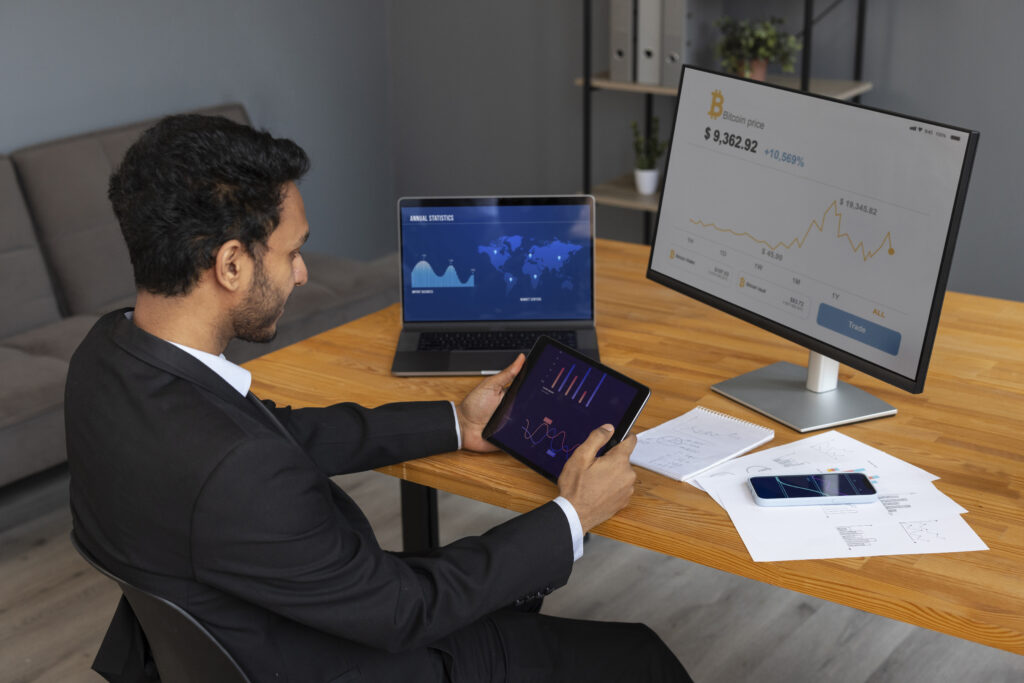
Blockchain analysis starts by gathering all the available data from the blockchain. Then, they meticulously examine the transaction history to identify any suspicious or unusual patterns. After that, analysts use specialized tools to visualize and map out the flow of transactions to gain insights into the network’s behavior. Additionally, analysts compare this data to known patterns of illicit activity to detect any potential criminal behavior. Finally, analysts compile their findings into a comprehensive report for further action or investigation.
Additionally, the world of blockchain is not just a network of transactions; rather, it’s a realm of endless possibilities and a beacon of hope in the digital age. Moreover, it’s where trust is built on transparency, and understanding blockchain analysis is key to unlocking its potential.
Understanding Blockchain Analysis with Red Wallet
The Core of Blockchain Analysis: Blockchain analysis is about understanding blockchain technology in simple terms. Secondly, it’s like breaking down and explaining the information in blockchain transactions. Additionally, this helps us turn complex data into useful knowledge. Moreover, it’s used for tracking digital money, ensuring honest transactions, and spotting fraud. Furthermore, this kind of analysis is crucial for keeping the cryptocurrency world transparent and secure, making sure this technology remains reliable and trusted.
Tools and Techniques: Checking blockchain data is about using simple tools. Additionally, we look at transaction histories and wallet details using blockchain explorers. Furthermore, special software helps find possible fraud patterns. Moreover, network analysis helps us understand complex transactions, and cryptography checks if data is real. As a result, these tools give us a full picture of blockchain networks, making things safer and catching suspicious activities. Ultimately, Red Wallet is part of this by offering easy tools that support these methods. Ultimately, it helps users stay safe and informed when dealing with blockchain transactions.
Key Aspects of Blockchain Analysis
- Diverse Applications: Explore how blockchain analysis serves various sectors.
- Enhancing Security: Highlight its role in security enhancement.
- Fraud Detection: Emphasize fraud detection capabilities.
- Market Trends Analysis: Discuss how it helps in understanding market trends.
- Regulatory Compliance: Outline its importance in ensuring regulatory compliance.
The Process of Blockchain Analysis
Data Collection and Interpretation: Collecting and making sense of data is essential for grasping the world we live in. We use different ways, like surveys and experiments, to gather data systematically. This information helps us understand behaviors, trends, and patterns. After collecting it, we carefully analyze the data using statistical methods to figure out what it means. This ensures that the conclusions we draw are based on evidence and good reasoning. These conclusions become the foundation for making smart decisions and taking strategic actions.
Challenges and Solutions: Blockchain analysis encounters special challenges like tricky data structures, privacy worries, and the ever-changing tech in blockchain. To handle this, we use smart algorithms, better privacy rules, and systems that learn and adapt. These methods try to keep things clear for users while also making sure everything is safe and trusted in the blockchain world. Balancing what blockchain shows transparently with what users want private is crucial. It ensures security and builds trust in the whole blockchain system.
Advantages of Blockchain Analysis
- In-Depth Transaction Analysis: Provides deep insights into transactions, unveiling the intricate details of blockchain interactions.
- Comprehensive Network Clarity: Offers a clear view of blockchain networks, shedding light on the intricate web of digital dealings.
- Strategic Decision Support: Aids in decision-making processes, providing valuable data to guide strategic moves in the blockchain space.
- Enhanced Transparency: Enhances transparency, making the blockchain’s complex operations more accessible and understandable.
- Regulatory Compliance Aid: Supports legal and compliance efforts, helping to navigate the regulatory maze of the blockchain world.
RedWallet’s Approach to Analysis Challenges
To get what blockchain technology is about, we need to handle tricky data, privacy problems, and tech that changes fast. To deal with these challenges, we use smart programs, strong privacy rules, and systems that can learn and adjust. These steps help keep a balance between being open with users and making sure everything is safe.
Additionally, Red Wallet is a big part of this. It gives strong tools that match these smart ways. Consequently, making it easier for users to understand blockchain. By using Red Wallet, people and groups can deal with blockchain tech with confidence. As a result, they can know they have a reliable tool to help them handle digital transactions securely. Therefore, this makes Red Wallet a must-have for anyone wanting to explore the tricky world of blockchain with confidence.
Explore:
How to track and monitor cryptocurrency transactions?
How to investigate Cryptocurrency Scams?
Frequently Asked Questions (FAQ)
Blockchain analysis is like detective work for cryptocurrency transactions. It examines the blockchain, where all transactions are recorded, to understand where money is moving and how it’s being used. It’s used to uncover illegal activities or to study market trends.
Firstly, blockchain analysis is like detective work for digital currency. Additionally, it studies the blockchain, which is a public ledger where all transactions of cryptocurrencies like Bitcoin are recorded. Moreover, analysts look at transaction patterns and connections between wallet addresses to understand how money moves, spot trends, or find suspicious activities. Furthermore, think of it as trying to solve a puzzle by tracing the paths of digital coins.
Yes, blockchain analysis can trace Bitcoin transactions. Additionally, since Bitcoin’s blockchain is public, every transaction is visible to everyone. Analysts use special tools to follow the trail of Bitcoin transactions from one wallet to another. This can help figure out how funds are moved and sometimes even identify who’s behind a transaction. Furthermore, it’s like following a breadcrumb trail in a forest to find where it leads.
Blockchain analysis helps in spotting fraud by monitoring how digital currencies move. Analysts look for unusual patterns, like big transactions or money passing through several wallets fast. This could suggest illegal acts like money laundering. By finding these signals, blockchain analysis works to stop fraudsters, making the digital currency space safer.


